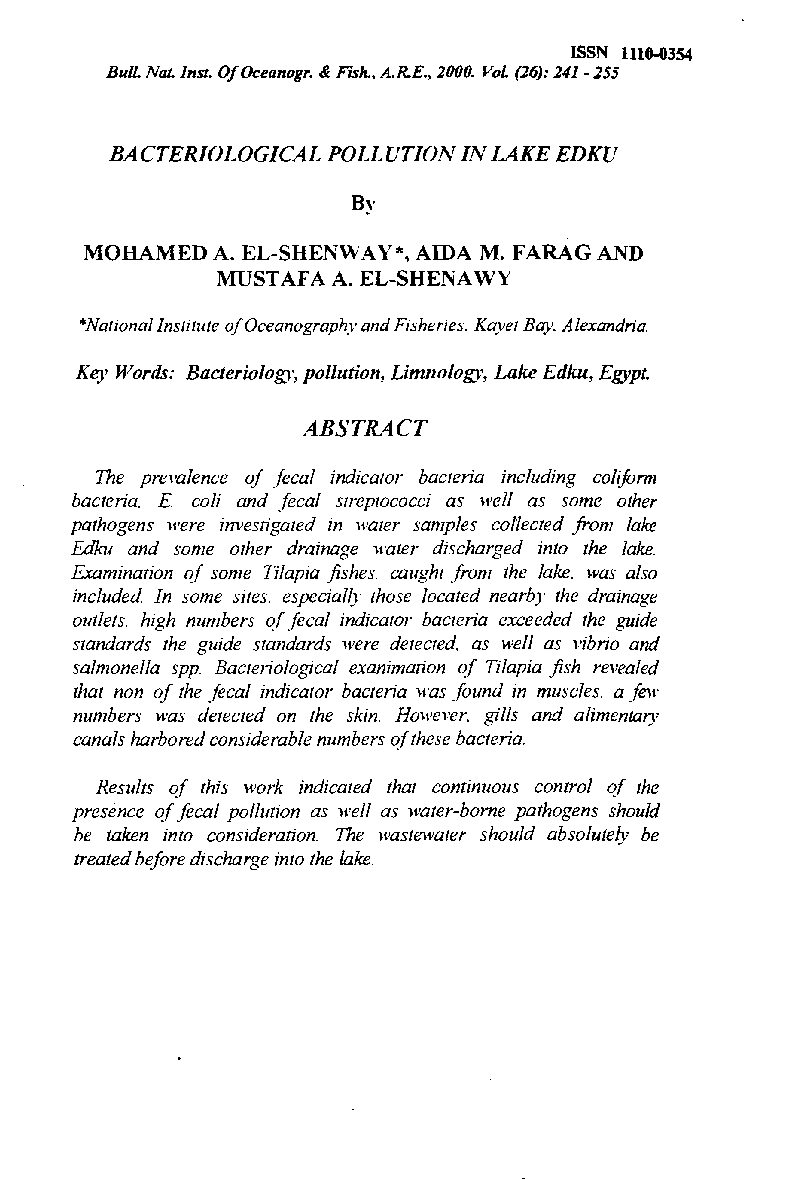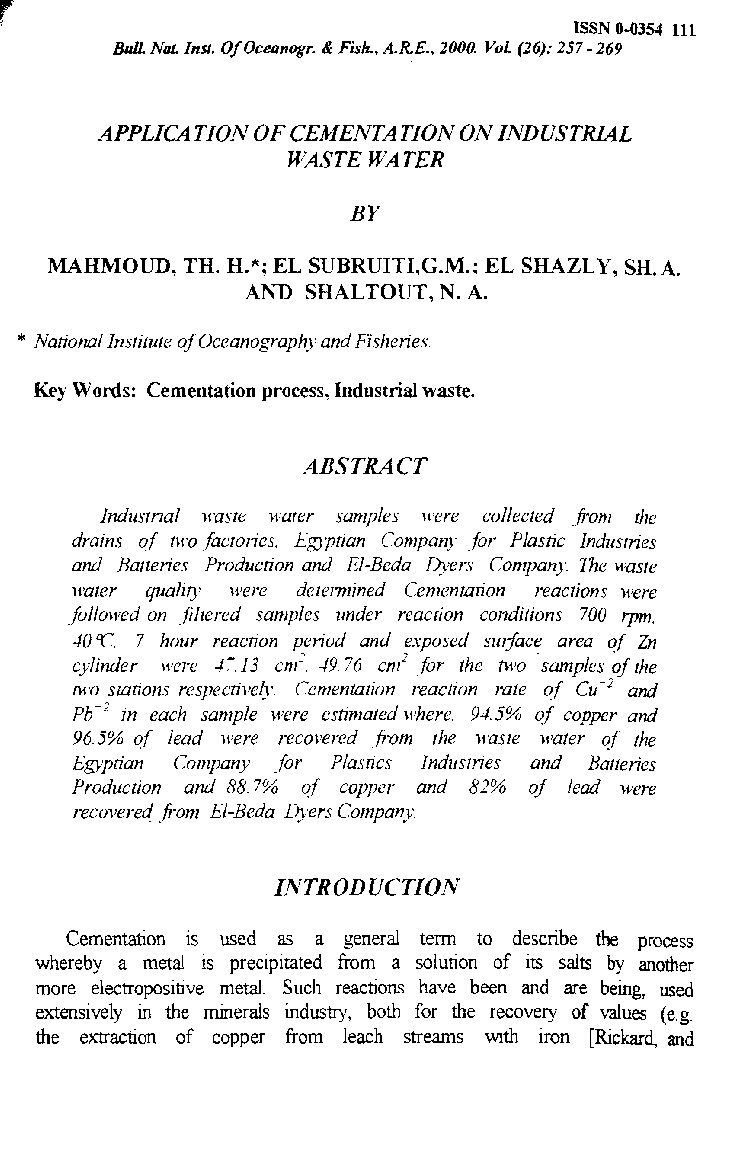Categories
vol-26BACTERIOLOGICAL POLLUTION IN LAKE EDKU
By
MOHAMED A. EL-SHENWAV*, AIDA M. FARAG AND
MUSTAFA A. EL-SHENAWV
*Nationaiinstitlite ofOceanography and Fisheries. Kayet Bay. Alexandria.
Key Words: Bacteriology, pollution, Limnology, Lake Edku, Egypt
ABSTRACT
The prevalence of fecal indicator bacteria including coliform
bacteria. E. coli and fecal streptococci as “well as some other
pathogens were investigated in water samples collected from lake
Edku and some other drainage water discharged into the lake.
Examination of some Tilapia fishes. caught from the lake. was also
included In some sites. especially those located nearby the drainage
outlets. high numbers of fecal indicator bacteria exceeded the guide
standards the gUide standards were detected. as well as vibrio and
salmonella spp. Bacteriological exanimation of Tilapia fish revealed
that non of the fecal indicator bacteria ‘was found in muscles. a fell’
numbers was detected on the skin. However. gills and alimentary
canals harbored considerable numbers ofthese bacteria.
Results of this work indicated that continuous control of the
presence of fecal pollution as well as water-borne pathogens should
be taken into consideration. The wastewater should absolutely be
treated before discharge into the lake. BACTERIOLOGICAL POLLUTION IN LAKE EDKU
By
MOHAMED A. EL-SHENWAV*, AIDA M. FARAG AND
MUSTAFA A. EL-SHENAWV
*Nationaiinstitlite ofOceanography and Fisheries. Kayet Bay. Alexandria.
Key Words: Bacteriology, pollution, Limnology, Lake Edku, Egypt
ABSTRACT
The prevalence of fecal indicator bacteria including coliform
bacteria. E. coli and fecal streptococci as “well as some other
pathogens were investigated in water samples collected from lake
Edku and some other drainage water discharged into the lake.
Examination of some Tilapia fishes. caught from the lake. was also
included In some sites. especially those located nearby the drainage
outlets. high numbers of fecal indicator bacteria exceeded the guide
standards the gUide standards were detected. as well as vibrio and
salmonella spp. Bacteriological exanimation of Tilapia fish revealed
that non of the fecal indicator bacteria ‘was found in muscles. a fell’
numbers was detected on the skin. However. gills and alimentary
canals harbored considerable numbers ofthese bacteria.
Results of this work indicated that continuous control of the
presence of fecal pollution as well as water-borne pathogens should
be taken into consideration. The wastewater should absolutely be
treated before discharge into the lake.







